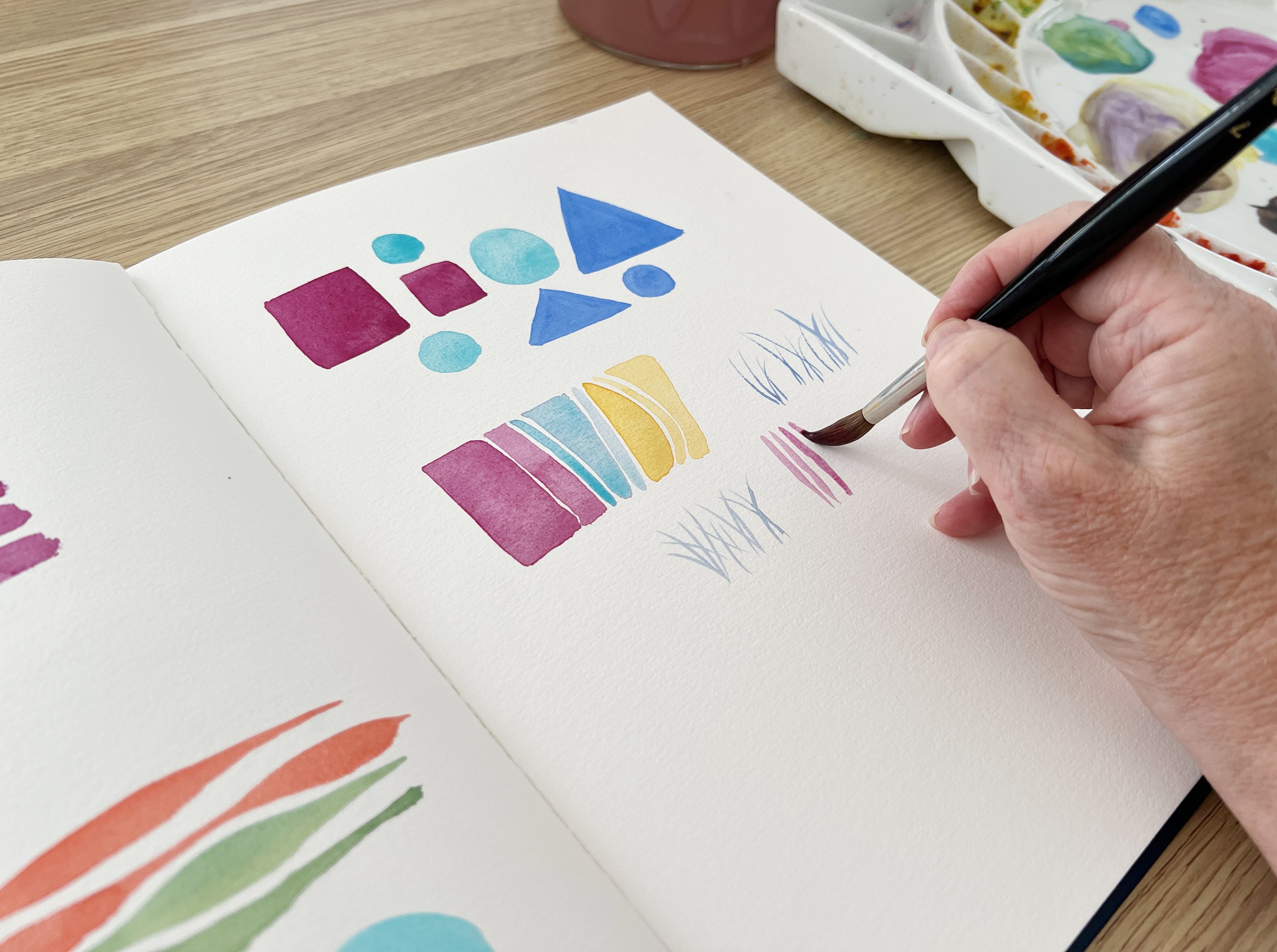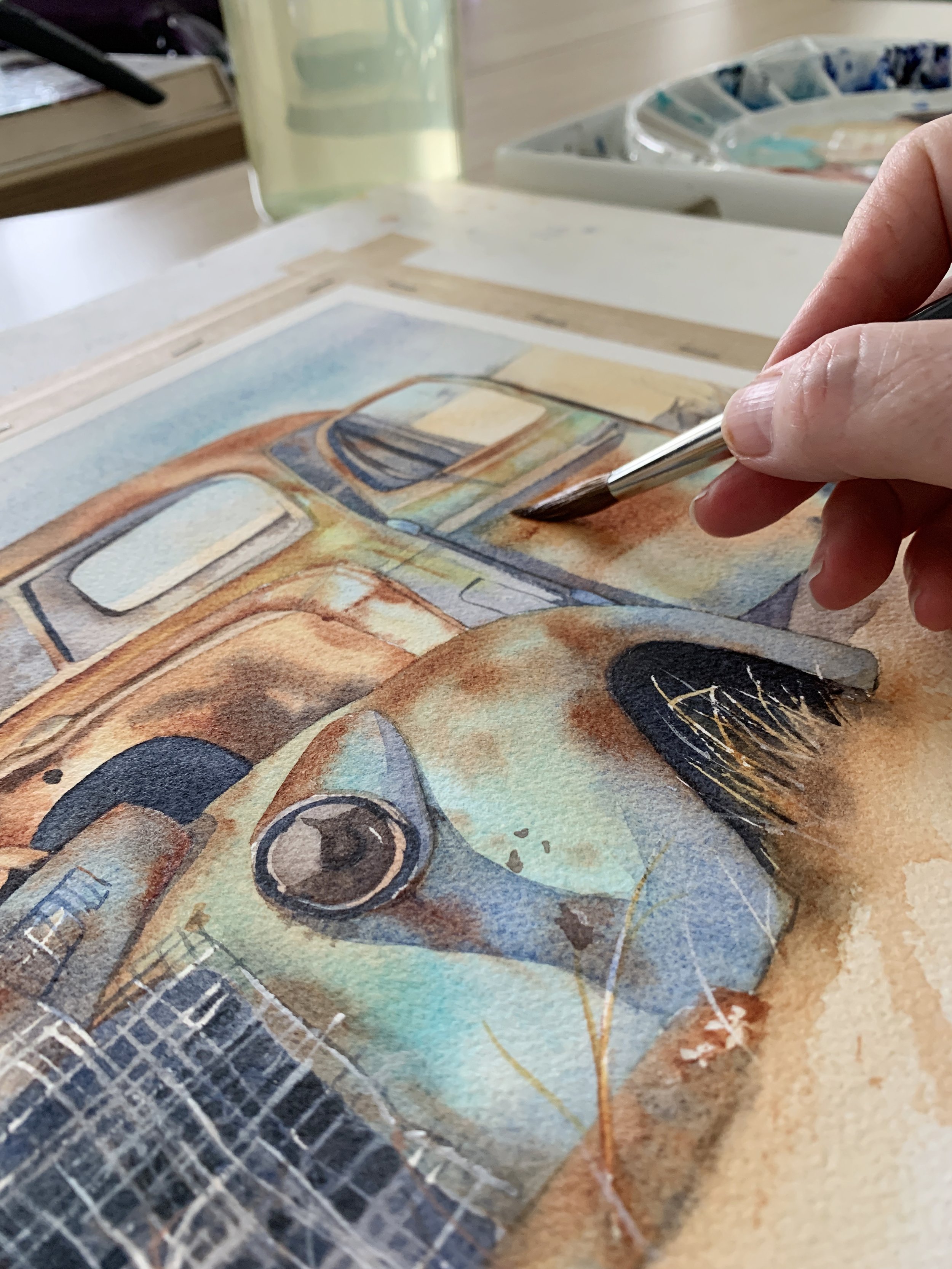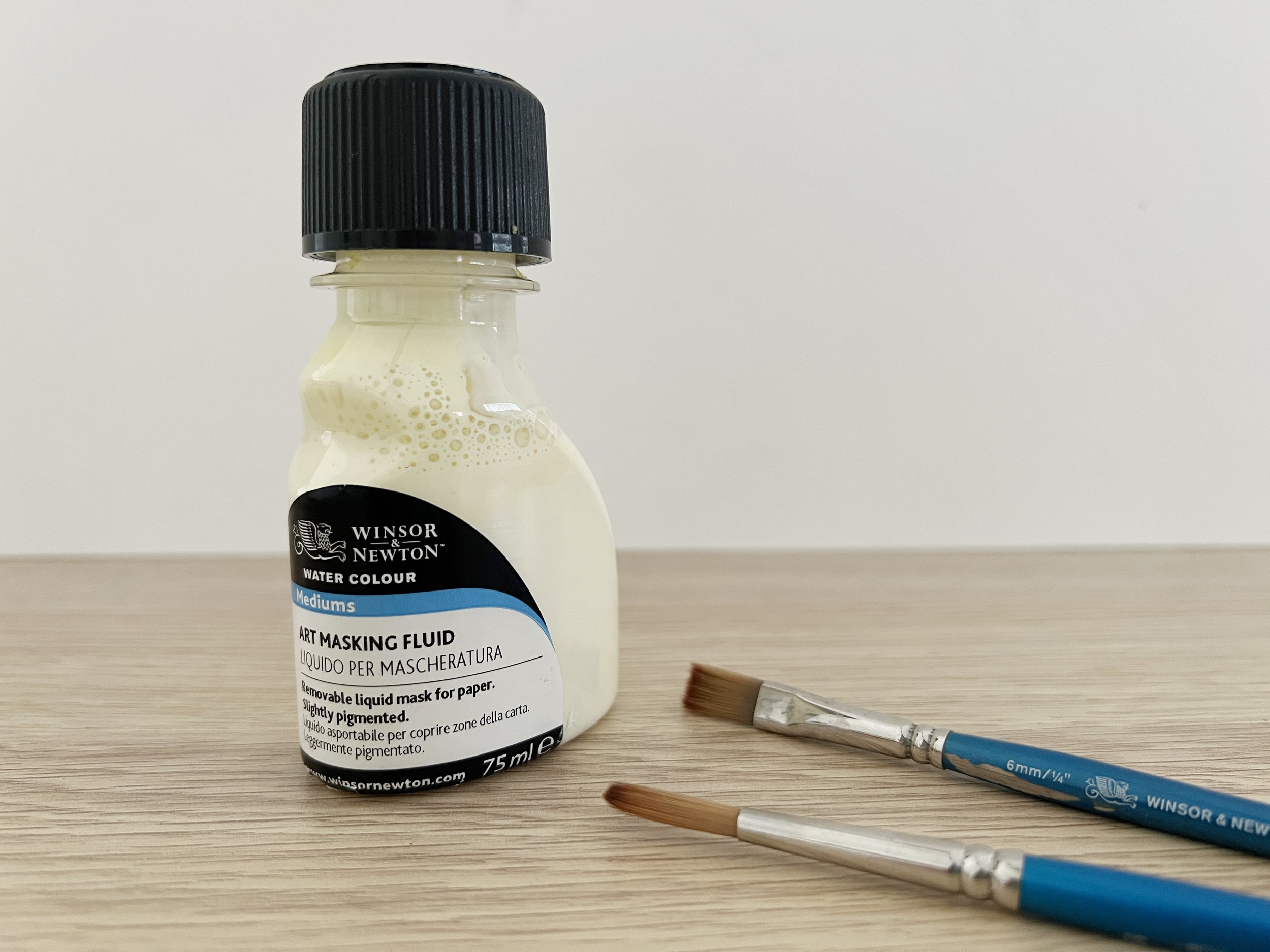Understanding why some pigments stain while others do not can feel a bit like unlocking a secret garden - once inside, everything seems vivid and clear. The behaviour of watercolour pigments, whether they are likely to stain or not, is deeply rooted in the characteristics of the pigments used in their creation. This variance can dramatically affect both the technique and final appearance of a watercolour piece.
Read MoreThe way you organise your workspace can significantly impact your artistic flow, much like a well-prepared table sets the scene for a meal. Imagine your workspace as a canvas, where each element — from palettes to brushes, from water jars to the paper itself — is positioned not merely by necessity, but with an intuitive grace.
Read MoreBefore you start painting, every artist’s journey begins with the first step: selecting your tools and getting familiar with all the materials you need. Watercolour paints come in pans and tubes, each with its unique charm. Watercolour brushes, in their myriad shapes and sizes, are your loyal companions, and watercolour paper—your canvas—awaits with its textures and weights. There is cold press paper, hot press paper, paper, that lies in between... Let's not forget the supporting cast: watercolour palette, masking fluid, and sponges.
Read MoreImagine water as the dance partner in your watercolour tango. Like any good partner, water can lead you to create fluid, dynamic movements on the paper. However, if not in sync, it can step on your toes, causing washes to bleed uncontrollably or colours to become dull. Very little water will result in dry brush like strokes, whereas too much water will flood your paper and make the colour hard to handle.
Read MoreOne thing most watercolour artists try to avoid is making mud when they mix colours.
Muddy colours appear lifeless or lacking in vibrancy. To avoid making dull colours it's best to use transparent colours when you mix paint.
Opaque pigments, because they are heavier and denser, tend to become dull and lifeless when you mix with them, particularly when you mix two or more opaque pigments together. If you need to mix with an opaque pigment - pair it with a transparent pigment to avoid a thick and heavy mixture.
Read MoreBackgrounds in art fill the critical space between the subject and the frame, turning empty canvases into resonant scenes brimming with life. They define the positive (subject) and negative (space around the subject) spaces, adding layers of depth and context. A background can support the main subject with a contrasting or complementary backdrop or even steal the spotlight, as Vincent van Gogh’s “Starry Night” beautifully illustrates. They're not just settings; they're expressions, setting the mood, suggesting settings, and influencing the viewer's emotional response.
Read MoreDiving into the world of watercolor painting can be both exhilarating and a bit daunting for beginners. With its beautiful washes and vibrant hues, watercolor art offers a unique medium to express creativity. However, the thought of mastering this fluid form of painting might seem overwhelming at first.
Read MoreBefore diving into specific colour substitutions, it's crucial to understand colour properties: hue, value, and saturation. These are universal, regardless of the brand. Hue refers to the colour itself, value to its lightness or darkness, and saturation to its intensity. When looking for a substitute, aim for a match in these three properties, and you'll be close to the original colour.
Read MoreIt's important to store your watercolour brushes well to maintain their shape, preserve the bristles, and extend their lifespan.
I used to store my brushes upright in containers but when we built my studio I included some narrow drawers to be built into the cabinetry.
I now store my brushes in the drawers. I bought some PVC multi purpose cupboard protector rolls and I cut them to fit inside the drawers. The liner stops the brushes from rolling around when I open and shut the drawers.
Read MoreBefore you start practicing there are several factors that can affect the outcome and quality of your brush strokes in watercolour painting.
Be aware of how much water you have mixed into your paint mixture. Thicker paint may result in more textured strokes, while thinner paint creates smoother, more translucent effects. When you are practicing brush strokes like those demonstrated in this blog post, you want the paint brush to glide over the paper so your paint mixture needs to be fluid and not too thick.
Read MoreUnderstanding the amount of water on your brush and its interplay with the paper is vital. Watercolour techniques like dry-on-dry, wet-on-dry, wet-on-wet, and dry-on-wet are not just techniques; they are the essence of watercolour painting. Each watercolour method allows for a different expression of water and pigment, and mastering these can elevate your art.
Many beginners may not use enough water on their paper. The brush should glide effortlessly over the paper for most techniques, except for dry brushing. Adjusting the water level in the paint mixture or in your brush, can help achieve the right flow.
Read MoreWhen it comes to applying masking fluid, your imagination is the limit. You can use synthetic brushes, ruling pens, silicone brushes, toothbrushes for splattering effects, sponges, bamboo quills and even fountain pens. Each tool brings its own unique magic to the paper.
Read MoreWhen I paint, I don't want to replicate the photo, I want to create an original piece of art.
There's a lot of information in my reference photo. The background is really busy and the Cockatoo has a lot of feather detail so I recognised the need to simplify to achieve a successful painting.
The photograph created the initial spark for the painting but it is merely a starting point to help convey the essence of the scene.
Read MoreI refer to a lost edge as an edge that is absent. A lost edge is painted by allowing the adjacent colours or values to blend or bleed into one another. In the Leucadendron painting below I have obscured the edges of some of the bracts and leaves by making the background colour the same colour as the subject.
Read MoreThe pre-mixed blacks appear a bit dull and uninspiring compared to the black I mixed myself. There's just something about the personally mixed hue that adds a touch of life to it. It's subtle, but it makes a difference.
When you mix blacks you can also adjust the temperature of the colour which will add some life to your paintings. Because you are mixing colours together, you are in control of the ratios. If you want a cool black, mix more of the cool colour you are using. If you want a warm black use a bit more of the warm colour you are mixing with.
Read MoreThe goal of using a limited palette is to achieve color harmony, simplify the decision-making process, and gain better control over the interaction of colors in a painting. You use a limited palette to create balanced, cohesive, and visually pleasing paintings.
It's important to note that a limited palette is not 'limiting'. Hazel Soan emphasises that working with a limited palette doesn't confine your creativity; instead, it sets you free. It empowers you to paint fearlessly, secure in the knowledge that your colors will harmonise effortlessly.
Read MorePainting on Aquabord offers a unique experience compared to traditional watercolour paper. Watercolour paper encourages exploration and experimentation, striking a delicate balance between control and spontaneity. The paint dances over the wet paper, producing surprising and delightful effects.
However, painting on Aquabord requires a distinct and different approach. The clay surface is absorbent and it doesn't stay wet for long. When I use it, I have to change my normal painting method.
Read MoreWhen creating drawings for watercolour paintings, you need to select and include essential information while omitting unnecessary details. Planning plays a crucial role in guiding these decisions it serves as a roadmap, allowing you to make informed decisions about what to emphasise in your line drawing.
Begin your painting process by carefully choosing your reference material, prioritising clear focal points and well-defined shapes that will translate effectively into your drawing.
Read More
















